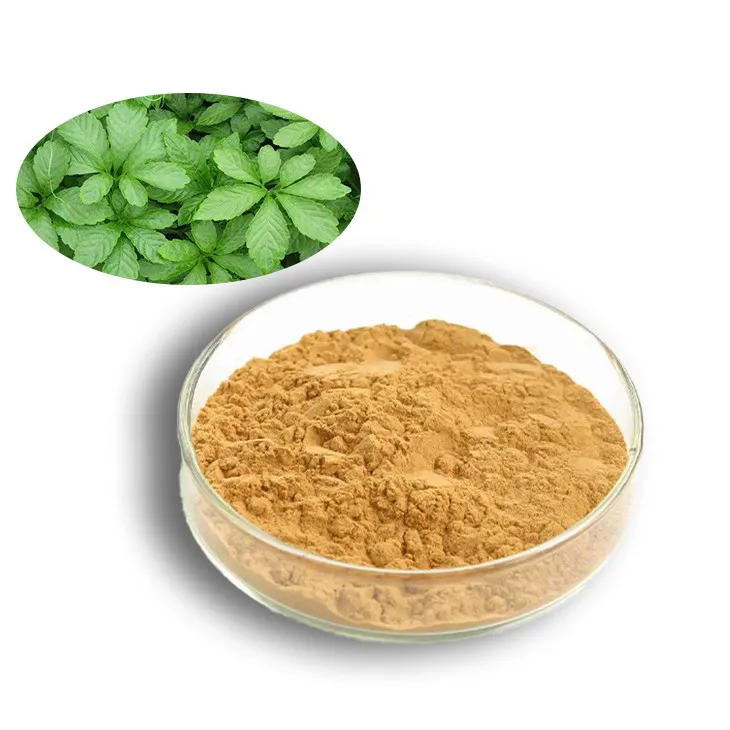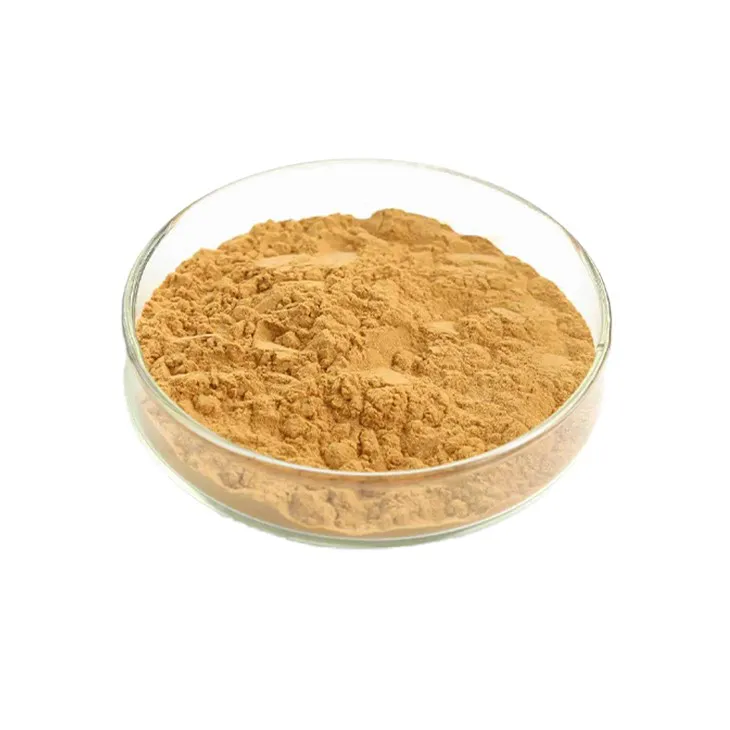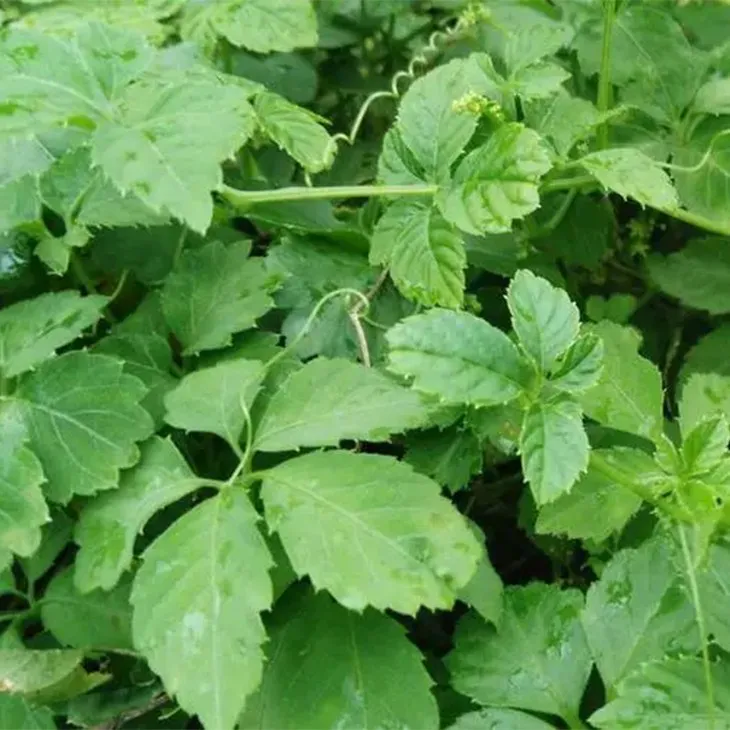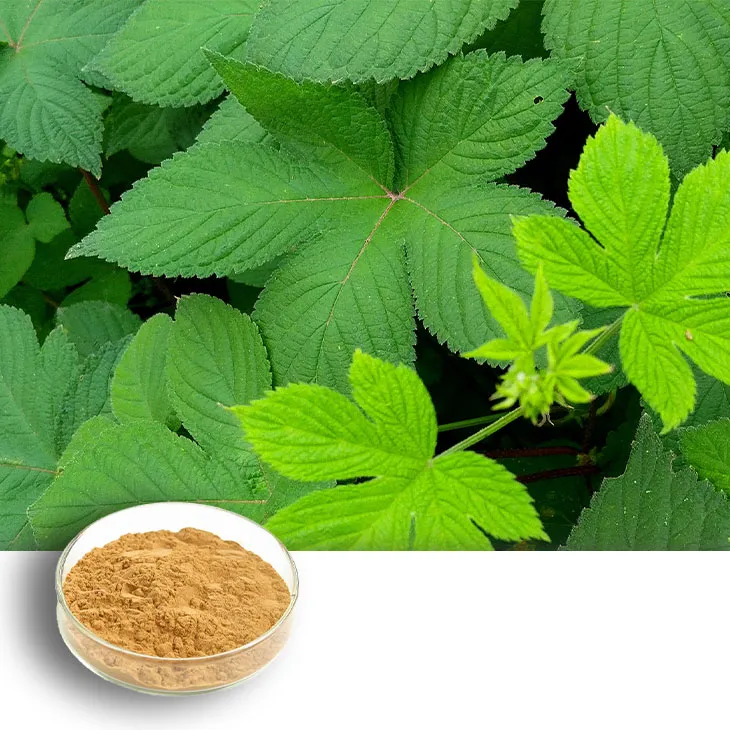- 0086-571-85302990
- sales@greenskybio.com
Optimal Bioavailability of Gynostemma pentaphyllum Extracts
2024-11-26

1. Introduction
Gynostemma pentaphyllum, also known as Jiaogulan, has been recognized for its numerous health - promoting properties in traditional medicine. However, the full realization of its potential health benefits depends on its bioavailability within the human body. Bioavailability refers to the proportion of a substance that enters the circulation and is available at the site of action. Understanding the factors that influence the bioavailability of Gynostemma pentaphyllum extract is crucial for maximizing its health - promoting effects.

2. Gynostemma pentaphyllum: An Overview
Gynostemma pentaphyllum is a climbing herbaceous plant native to Asia. It contains a rich variety of bioactive compounds, including saponins, flavonoids, polysaccharides, and amino acids. These compounds are believed to be responsible for its antioxidant, anti - inflammatory, anti - hyperglycemic, and immunomodulatory effects.
The saponins in Gynostemma pentaphyllum, especially gypenosides, are considered to be the major bioactive components. They have a structure similar to that of ginsenosides found in ginseng, which may contribute to its adaptogenic properties.

3. Factors Affecting Bioavailability
3.1 Extraction Methods
The method used to extract Gynostemma pentaphyllum can significantly impact the bioavailability of its active components.
- Solvent - based extraction: Traditional solvent - based extraction methods, such as using ethanol or methanol, can extract a wide range of compounds. However, the choice of solvent, extraction time, and temperature can all affect the quality and bioavailability of the extract. For example, high - temperature extraction may lead to the degradation of some heat - sensitive compounds, reducing their bioavailability.
- Supercritical fluid extraction: This modern extraction technique, often using supercritical carbon dioxide, offers several advantages. It can selectively extract target compounds while minimizing the extraction of unwanted substances. Moreover, it operates at relatively low temperatures, which helps to preserve the integrity of heat - sensitive bioactive components, potentially enhancing their bioavailability.
- Water - extraction: Water - extraction is a more natural and environmentally friendly method. It can extract water - soluble compounds such as polysaccharides. However, the extraction efficiency may be lower compared to solvent - based methods for some lipophilic compounds, which may limit their bioavailability if they are important active components.
3.2 Formulation Techniques
Once the extract is obtained, the formulation technique plays a vital role in determining bioavailability.
- Capsule formulation: Encapsulating the Gynostemma pentaphyllum extract in capsules can protect it from degradation in the stomach and improve its stability during storage. However, the type of capsule material and its dissolution characteristics can affect the release of the extract in the gastrointestinal tract. For example, a slow - release capsule may provide a more sustained release of the active components, potentially enhancing absorption.
- Tablet formulation: Tablets are another common form. The addition of excipients, such as disintegrants and binders, can influence the disintegration time and dissolution rate of the tablet in the digestive system. If the tablet does not disintegrate quickly enough, the release of the extract may be delayed, reducing bioavailability.
- Liquid formulation: Liquid formulations, such as tinctures or syrups, may offer faster absorption compared to solid forms. However, they may also require the addition of preservatives and stabilizers, which could potentially interact with the active components and affect bioavailability.
3.3 Gastrointestinal Absorption
The gastrointestinal (GI) tract is the primary site of absorption for Gynostemma pentaphyllum extract.
- pH - dependent solubility: The solubility of the active components in the different pH environments of the GI tract can influence their absorption. For example, some saponins may be less soluble in the highly acidic environment of the stomach and more soluble in the relatively neutral environment of the small intestine. If the formulation can protect the saponins from the acidic stomach environment until they reach the small intestine, their absorption may be improved.
- Enzymatic degradation: The GI tract contains a variety of enzymes that can degrade the bioactive components of the extract. For instance, some glycosidic bonds in gypenosides may be cleaved by certain enzymes, converting them into less active forms. Strategies to protect the extract from enzymatic degradation, such as encapsulation or the use of enzyme inhibitors, can enhance bioavailability.
- Intestinal permeability: The ability of the active components to cross the intestinal barrier is crucial for absorption. Some compounds may have limited permeability due to their large molecular size or hydrophobic nature. Techniques such as nano - encapsulation or the use of absorption enhancers can increase intestinal permeability and thus improve bioavailability.

4. Enhancing Bioavailability
4.1 Nanotechnology Applications
Nanotechnology offers innovative ways to enhance the bioavailability of Gynostemma pentaphyllum extract.
- Nano - encapsulation: Nano - sized capsules or particles can be used to encapsulate the active components of the extract. These nano - carriers can protect the components from degradation, improve their solubility, and enhance their ability to cross the intestinal barrier. For example, lipid - based nano - carriers can increase the bioavailability of lipophilic compounds in the extract.
- Nano - emulsions: Nano - emulsions can be formulated to improve the dispersion and solubility of the extract in aqueous media. This can lead to better absorption in the GI tract. Nano - emulsions can also protect the active components from enzymatic degradation and enhance their interaction with the intestinal mucosa.
4.2 Combination with Bioenhancers
Certain substances, known as bioenhancers, can be combined with Gynostemma pentaphyllum extract to improve its bioavailability.
- Piperine: Piperine, a compound found in black pepper, has been shown to enhance the bioavailability of many drugs and herbal extracts. It can inhibit drug - metabolizing enzymes in the GI tract, increasing the residence time of the active components of Gynostemma pentaphyllum extract and improving their absorption.
- Quercetin: Quercetin, a flavonoid, can act as a bioenhancer by modulating intestinal transporters and increasing the permeability of the intestinal barrier. When combined with Gynostemma pentaphyllum extract, it may enhance the absorption of its bioactive components.
4.3 Optimization of Dosage Forms
By optimizing the dosage form of Gynostemma pentaphyllum extract, its bioavailability can be improved.
- Immediate - release vs. sustained - release: Determining whether an immediate - release or a sustained - release dosage form is more appropriate depends on the nature of the active components and the desired therapeutic effect. For example, if the active components have a short half - life in the body, an immediate - release form may be preferred to quickly achieve effective blood concentrations. On the other hand, for long - term health benefits, a sustained - release form may be more beneficial to maintain a stable level of the active components in the body.
- Particle size reduction: Reducing the particle size of the extract can increase its surface area, which can enhance dissolution and absorption. Micronization or even nano - sizing of the extract particles can improve their bioavailability.

5. Conclusion
Maximizing the bioavailability of Gynostemma pentaphyllum extract is a complex but important task. By understanding the factors that affect bioavailability, such as extraction methods, formulation techniques, and gastrointestinal absorption, and by applying strategies to enhance it, such as nanotechnology applications, combination with bioenhancers, and optimization of dosage forms, we can better harness the health - promoting potential of this valuable plant extract. Future research should continue to explore new methods and technologies to further improve the bioavailability of Gynostemma pentaphyllum extract and to fully realize its benefits in the prevention and treatment of various diseases.
FAQ:
Question 1: What are the common extraction methods for Gynostemma pentaphyllum extract?
Common extraction methods for Gynostemma pentaphyllum extract include solvent extraction (such as using ethanol or water as solvents), and supercritical fluid extraction. Solvent extraction is relatively simple and cost - effective. Supercritical fluid extraction can often obtain extracts with higher purity and better quality, as it uses supercritical carbon dioxide which has properties between liquid and gas and can selectively extract active components.
Question 2: How does the extraction method affect the bioavailability of Gynostemma pentaphyllum extract?
Different extraction methods can result in different compositions and physical - chemical properties of the extract. For example, a harsh extraction method may damage some active components, reducing their bioavailability. If the extraction method can better preserve the integrity of bioactive compounds like gypenosides in Gynostemma pentaphyllum, and also make them in a more soluble and absorbable form, it will enhance the bioavailability. For instance, proper extraction may increase the solubility of the extract, which is beneficial for its absorption in the gastrointestinal tract.
Question 3: What are the formulation techniques that can improve the bioavailability of Gynostemma pentaphyllum extract?
One technique is nano - formulation. By reducing the particle size of the extract to the nano - scale, it can increase the surface area to volume ratio, which enhances dissolution and absorption. Another is encapsulation. Encapsulating the extract in suitable carriers such as liposomes or polymeric nanoparticles can protect the active components from degradation in the gastrointestinal environment and also improve their uptake by cells. Additionally, formulating the extract into a self - emulsifying drug delivery system can improve its solubility and bioavailability.
Question 4: Are there any specific compounds in Gynostemma pentaphyllum that are crucial for bioavailability?
Gypenosides are important compounds in Gynostemma pentaphyllum related to bioavailability. They are the main bioactive components. Their chemical structure and properties influence their absorption, distribution, metabolism, and excretion in the body. If the extraction and formulation can optimize the state of gypenosides, for example, increasing their solubility and stability, it will have a positive impact on the overall bioavailability of the Gynostemma pentaphyllum extract.
Question 5: How can we measure the bioavailability of Gynostemma pentaphyllum extract?
One common method is to use pharmacokinetic studies. This involves administering the extract to test subjects (usually animals in pre - clinical studies) and then measuring the concentration of the active components (such as gypenosides) in the blood over time. The area under the concentration - time curve (AUC), peak concentration (Cmax), and time to reach peak concentration (Tmax) are important parameters to evaluate bioavailability. Another approach is to study the excretion of the extract components in feces and urine to understand how much of the administered extract is actually absorbed and utilized by the body.
Related literature
- Bioactive Components and Pharmacological Effects of Gynostemma pentaphyllum"
- "Enhancing Bioavailability of Herbal Extracts: Case Study of Gynostemma pentaphyllum"
- "Extraction Methods and Bioavailability of Gynostemma pentaphyllum: A Review"
- ▶ Hesperidin
- ▶ Citrus Bioflavonoids
- ▶ Plant Extract
- ▶ lycopene
- ▶ Diosmin
- ▶ Grape seed extract
- ▶ Sea buckthorn Juice Powder
- ▶ Fruit Juice Powder
- ▶ Hops Extract
- ▶ Artichoke Extract
- ▶ Mushroom extract
- ▶ Astaxanthin
- ▶ Green Tea Extract
- ▶ Curcumin
- ▶ Horse Chestnut Extract
- ▶ Other Product
- ▶ Boswellia Serrata Extract
- ▶ Resveratrol
- ▶ Marigold Extract
- ▶ Grape Leaf Extract
- ▶ New Product
- ▶ Aminolevulinic acid
- ▶ Cranberry Extract
- ▶ Red Yeast Rice
- ▶ Red Wine Extract
-
Tongkat Ali Extract
2024-11-26
-
Lily extract
2024-11-26
-
Black Garlic Extract
2024-11-26
-
Shikonin
2024-11-26
-
Eucommia Ulmoides Extract
2024-11-26
-
Sea buckthorn Juice Powder
2024-11-26
-
Saponin Extract
2024-11-26
-
Nettle leaf extract
2024-11-26
-
Quercetin
2024-11-26
-
Horse Chestnut Extract
2024-11-26





















